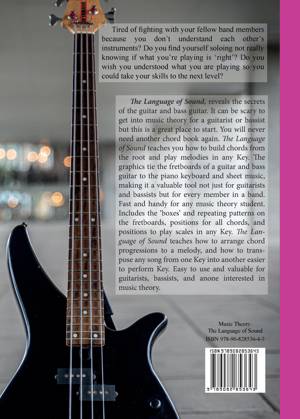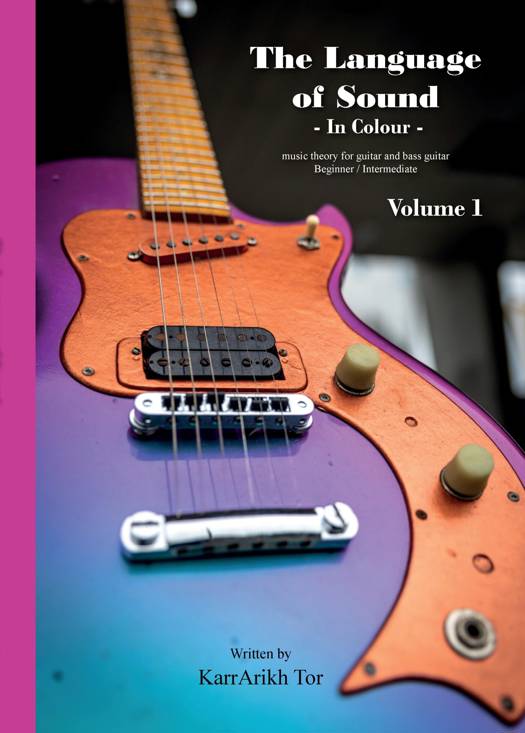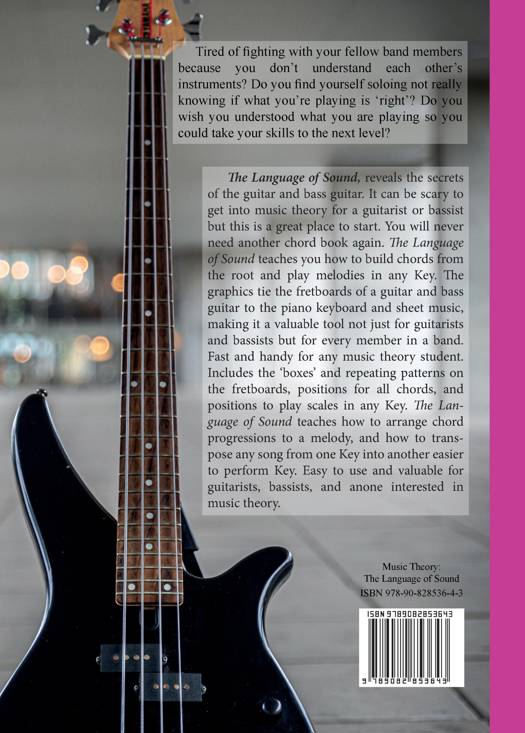
- Afhalen na 1 uur in een winkel met voorraad
- Gratis thuislevering in België vanaf € 30
- Ruim aanbod met 7 miljoen producten
- Afhalen na 1 uur in een winkel met voorraad
- Gratis thuislevering in België vanaf € 30
- Ruim aanbod met 7 miljoen producten
Zoeken


Omschrijving
Music Theory: The Language of Sound, reveals the secrets of the guitar and bass guitar. It can be scary to get into music theory for a guitarist or bassist but this is a great place to start. You will never need another chord book or theory book again. The Language of Sound teaches you how to build chords from the root and play melodies in any Key. The graphics tie the fretboards of a guitar and bass guitar to the piano keyboard and sheet music, making it a valuable tool not just for guitarists and bassists but for every member in a band. Fast and handy for any music theory student. Includes the 'boxes' and repeating patterns on the fretboards, positions for all chords, and positions to play scales in any Key. The Language of Sound teaches how to arrange chord progressions to a melody, and how to transpose any song from one Key into another easier to perform Key. Easy to use and valuable for guitarists, bassists, and keyboard players.
The Language of Sound - In Colour - Volume 1: contains chapters 1-3, and appendices from the full textbook
Chapter 1 - introduction, Grand Staff and basic symbols
Chapter One explains the basic theory behind Western Musical Traditions, treating music theory like a language. Introduced in this chapter are: Octave divisions, Whole steps, Half-steps, Accidentals, Clefs, Grand staff, Treble staff, Bass staff, Alto staff, Tenor staff, Time signature, Note types, Rests, Tempo.
Chapter 2 - standard tuning, notes on frets, tablature
Chapter Two shows where the natural notes (white keys) on a piano are located on the guitar and bass guitar fretboards and also on the Grand Staff. Introduced in this chapter are: Standard tuning, Tablature.
Chapter 3 - scales, Major Key scale, positions on fretboards, Intervals
Chapter Three examines scales, particularly the Major Key scale, showing how we develop our scales from a tonic note, and where to find Major scales on the fretboards of guitars and bass guitars. Introduced in this chapter are: Ascending scale, Descending scale, Chromatic scale, Tonic note, Tonic scale names, Diatonic scales, Enharmonic Notes and Keys, Scale degrees, 15 Major Keys, Intervals.
The Language of Sound - In Colour - Volume 1: contains chapters 1-3, and appendices from the full textbook
Chapter 1 - introduction, Grand Staff and basic symbols
Chapter One explains the basic theory behind Western Musical Traditions, treating music theory like a language. Introduced in this chapter are: Octave divisions, Whole steps, Half-steps, Accidentals, Clefs, Grand staff, Treble staff, Bass staff, Alto staff, Tenor staff, Time signature, Note types, Rests, Tempo.
Chapter 2 - standard tuning, notes on frets, tablature
Chapter Two shows where the natural notes (white keys) on a piano are located on the guitar and bass guitar fretboards and also on the Grand Staff. Introduced in this chapter are: Standard tuning, Tablature.
Chapter 3 - scales, Major Key scale, positions on fretboards, Intervals
Chapter Three examines scales, particularly the Major Key scale, showing how we develop our scales from a tonic note, and where to find Major scales on the fretboards of guitars and bass guitars. Introduced in this chapter are: Ascending scale, Descending scale, Chromatic scale, Tonic note, Tonic scale names, Diatonic scales, Enharmonic Notes and Keys, Scale degrees, 15 Major Keys, Intervals.
Specificaties
Betrokkenen
- Auteur(s):
- Illustrator(s):
- Uitgeverij:
Inhoud
- Aantal bladzijden:
- 79
- Taal:
- Engels
Eigenschappen
- Productcode (EAN):
- 9789082853643
- Verschijningsdatum:
- 23/07/2022
- Uitvoering:
- Hardcover
- Afmetingen:
- 206 mm x 287 mm
- Gewicht:
- 444 g

Alleen bij Standaard Boekhandel
+ 75 punten op je klantenkaart van Standaard Boekhandel
Beoordelingen
We publiceren alleen reviews die voldoen aan de voorwaarden voor reviews. Bekijk onze voorwaarden voor reviews.









